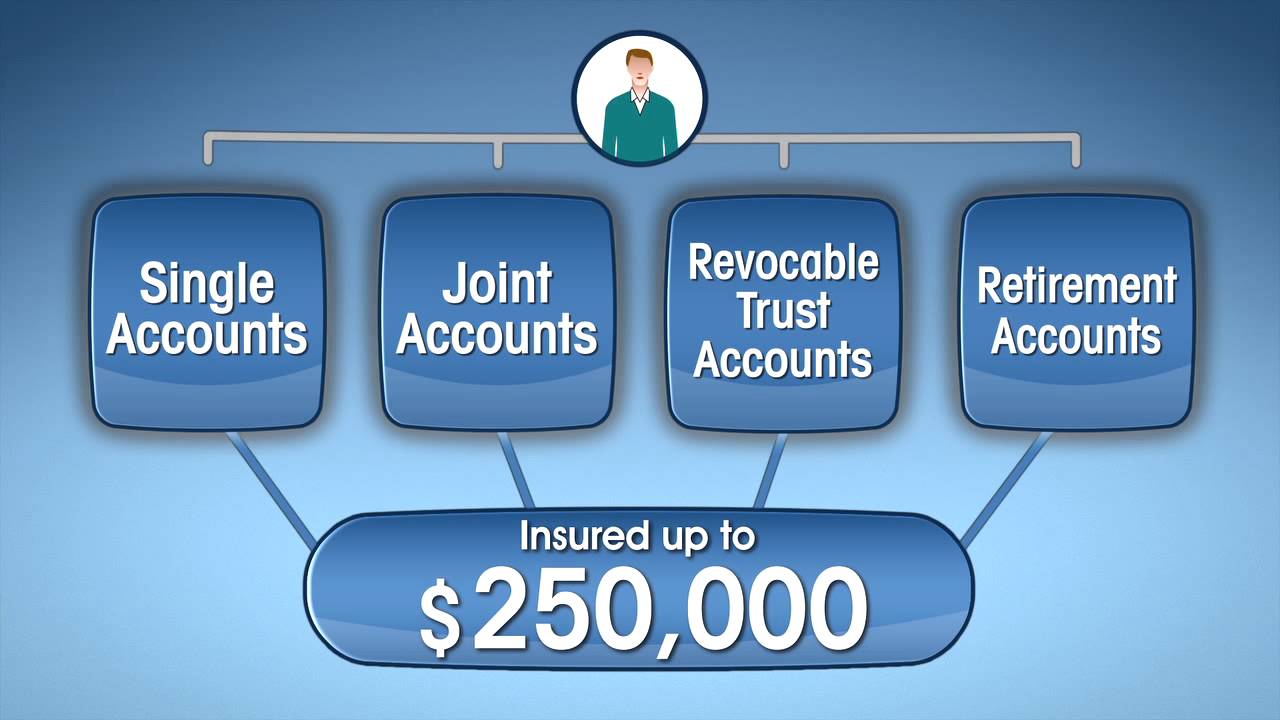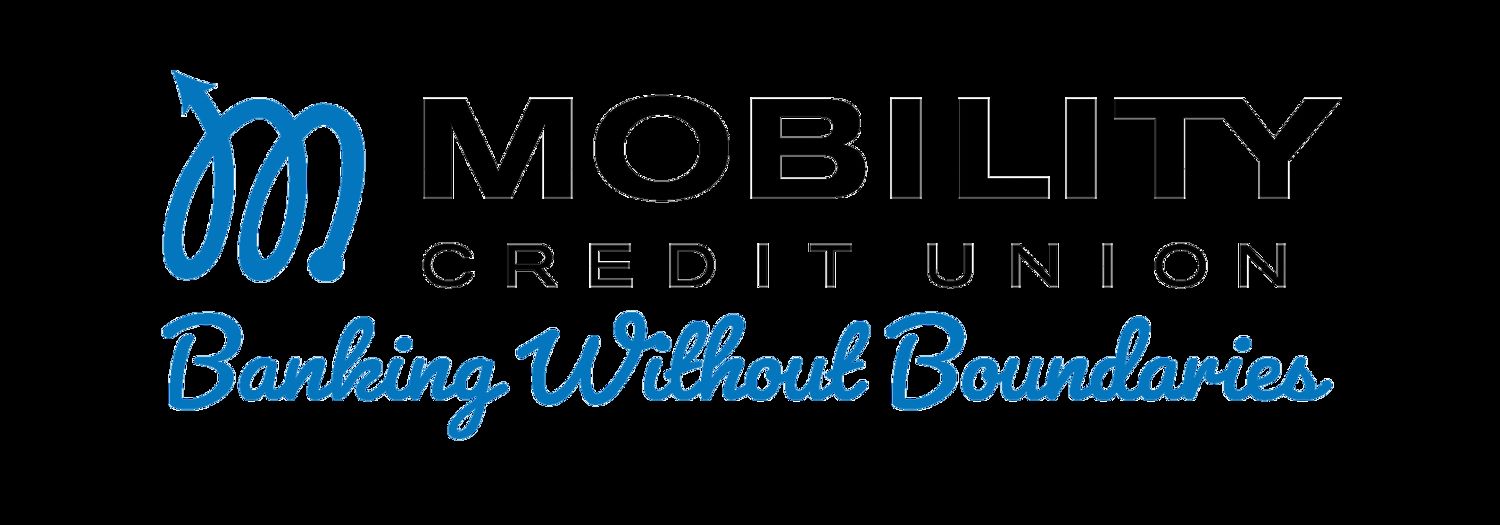

Finance
How To Create A Credit Union
Published: January 10, 2024
Learn how to create a credit union and manage finances effectively with expert tips and strategies. Enhance your financial knowledge and empower your credit union journey.
(Many of the links in this article redirect to a specific reviewed product. Your purchase of these products through affiliate links helps to generate commission for LiveWell, at no extra cost. Learn more)
Table of Contents
- Introduction
- Step 1: Research and Planning
- Step 2: Forming a Board of Directors
- Step 3: Structuring the Credit Union
- Step 4: Obtaining Necessary Licenses and Permits
- Step 5: Establishing Membership Criteria
- Step 6: Creating Products and Services
- Step 7: Setting Up Operations and Systems
- Step 8: Hiring and Training Staff
- Step 9: Marketing and Promoting the Credit Union
- Step 10: Maintaining Compliance and Regulatory Requirements
- Conclusion
Introduction
Creating a credit union can be an empowering and financially beneficial endeavor for a community. It provides an alternative to traditional banking institutions and gives individuals the opportunity to become members and owners of a financial institution that serves their specific needs. If you are passionate about finance and want to make a positive impact in your community, starting a credit union may be the perfect venture for you.
A credit union is a not-for-profit cooperative financial institution owned and operated by its members. The primary goal of a credit union is to provide financial services to its members, including savings accounts, loans, and other financial products, at favorable rates. By forming a credit union, you can help your community gain access to affordable financial services while fostering financial education and empowerment.
Starting a credit union requires careful planning, solid execution, and compliance with applicable laws and regulations. In this article, we will guide you through the step-by-step process of creating a credit union, ensuring that you have a solid foundation for success. From research and planning to marketing and compliance, each step will help you navigate the path toward establishing a thriving credit union that meets the financial needs of your community.
It is important to note that starting a credit union requires thorough research and understanding of the financial landscape and regulatory requirements. It is recommended to consult with legal and financial professionals who specialize in credit union formation to ensure compliance and to receive expert guidance.
Now, let’s dive into the step-by-step process of creating a credit union and explore the key factors you need to consider along the way.
Step 1: Research and Planning
One of the critical first steps in creating a credit union is conducting thorough research and thoughtful planning. This step is crucial because it lays the groundwork for all subsequent actions and determines the success and sustainability of your credit union.
Start by understanding the needs and demographics of the community you aim to serve. Identify the financial challenges faced by individuals, businesses, and organizations in the community. Conduct surveys or hold focus groups to gather feedback and insights directly from potential members. This research will help you tailor your credit union’s products and services to address the specific needs and gaps in the market.
Next, study the relevant laws and regulations governing credit unions in your jurisdiction. Familiarize yourself with the licensing requirements, capitalization thresholds, and operational guidelines. Depending on where you are located, credit unions may be subject to different regulatory bodies, such as state or federal authorities. Ensure that you comply with all the legal and regulatory requirements to avoid any legal complications down the line.
Once you have a good understanding of the market and the regulatory landscape, create a detailed business plan for your credit union. Outline your vision, mission, and goals for the credit union. Define your target market, competitive advantages, and the financial products and services you plan to offer. Include a comprehensive financial projection, including projected revenues, expenses, and capital requirements.
In addition, consider the organizational structure of your credit union. Determine whether you want to form a single-sponsor credit union affiliated with a specific organization or a community credit union open to anyone in a particular geographic area. Decide on the legal structure, such as a nonprofit or a mutual organization, and consider how you will structure the governance and decision-making processes.
Lastly, create a timeline and budget for your credit union’s formation. Identify the key milestones and the estimated costs associated with each step. It is important to have a realistic timeline and adequate financial resources to ensure a smooth and successful launch of your credit union.
By investing time in thorough research and strategic planning, you lay a strong foundation for your credit union’s future success. This step sets the stage for the subsequent steps, such as forming a board of directors, obtaining necessary licenses, and establishing membership criteria.
Step 2: Forming a Board of Directors
Forming a board of directors is a crucial step in establishing a credit union. The board of directors plays a vital role in setting the strategic direction, making key decisions, and ensuring the overall success of the credit union. Here are the key factors to consider when forming your credit union’s board of directors.
Start by identifying individuals who are passionate about the credit union movement and share your vision for the organization. Seek individuals with diverse skills, experiences, and backgrounds, as this will bring a variety of perspectives and expertise to the board. Look for individuals with knowledge in finance, governance, risk management, and community engagement.
Consider reaching out to professionals in the financial industry, local business leaders, and individuals who have experience serving on boards of other nonprofit organizations. They will bring valuable insights and expertise to your credit union’s board, which will help drive its success.
When assembling your board of directors, it is important to ensure that you have a well-balanced representation. Ideally, your board should include members who are reflective of the community you aim to serve. This diversity will enable the board to make informed decisions that align with the needs and interests of the credit union’s members.
Once you have identified potential board members, engage them in conversations about your credit union’s mission, goals, and strategic plans. Discuss their roles and responsibilities as board members, including attending board meetings, participating in committees, and upholding fiduciary duties.
Consider implementing a nomination and selection process for board members. This process may involve applications, interviews, and references to ensure that the individuals selected are dedicated, qualified, and committed to the credit union’s success. By establishing a formal selection process, you can maintain transparency and objectivity in the board formation process.
Additionally, provide comprehensive orientation and training to new board members to ensure they have a clear understanding of their roles and responsibilities. Educate them on the credit union’s bylaws, governance structure, and regulatory requirements. This will empower the board to make informed decisions and effectively oversee the credit union’s operations.
Lastly, establish a system of ongoing evaluation and performance assessment for board members. Regularly assess their contributions, attendance, and adherence to ethical standards. This evaluation process will ensure accountability and continuous improvement within the board.
By forming a board of directors that is committed, diverse, and equipped with the necessary skills and knowledge, you set the stage for strong governance and strategic decision-making within your credit union. The board will serve as the guiding force, steering the credit union towards its goals and ultimately benefiting its members and the community as a whole.
Step 3: Structuring the Credit Union
Structuring your credit union is a critical step in the formation process. This step involves making decisions regarding the legal structure, membership eligibility, and the organizational and operational framework of the credit union. By carefully considering these aspects, you can ensure that your credit union operates efficiently and effectively. Here are the key factors to consider when structuring your credit union:
Legal Structure: Determine the legal structure of your credit union. The most common options include nonprofit organizations or mutual organizations. Nonprofit credit unions are governed by state and federal laws and must adhere to specific regulations to maintain their nonprofit status. Mutual credit unions are owned by their members and operate in a cooperative manner, with the primary goal of serving the financial needs of their members.
Membership Eligibility: Define the membership criteria for your credit union. Determine who is eligible to become a member, such as individuals within a specific geographic area, employees of a particular organization, or individuals who share a common bond or interest. It is important to ensure that your membership eligibility criteria comply with applicable laws and regulations.
Governance Structure: Establish a governance structure for your credit union. This includes defining the roles and responsibilities of the board of directors, as well as any committees that may be necessary for decision-making and oversight. Consider the number of directors, term limits, and the process for electing or appointing board members. It is essential to establish a governance structure that promotes transparency, accountability, and the best interests of the credit union’s members.
Organizational Framework: Determine the organizational framework of your credit union. This includes defining the management structure and establishing policies and procedures that guide the day-to-day operations. Consider the staffing requirements, reporting lines, and the allocation of responsibilities. It is important to have efficient systems and processes in place to ensure smooth operations and member satisfaction.
Financial Management: Develop a comprehensive financial management plan that outlines the credit union’s budgeting, accounting, and risk management practices. Establish policies for asset-liability management, capital adequacy, and investment strategies. Implement robust internal controls to safeguard the credit union’s assets and ensure compliance with financial regulations.
Technology Infrastructure: Invest in a robust technology infrastructure that supports the operations and services of your credit union. Implement a secure and efficient banking platform, customer relationship management system, and other relevant software solutions. This will enable seamless transactions, convenient member services, and effective data management.
Collaborations and Partnerships: Consider forming alliances and partnerships with other organizations to enhance the offerings and capabilities of your credit union. This could include collaborations with other credit unions, financial institutions, community organizations, or government agencies. Building a network of partnerships can expand your credit union’s reach and provide additional resources and expertise.
Structuring your credit union requires careful thought, consideration of legal and regulatory requirements, and alignment with the needs and goals of your target membership base. By creating a solid and efficient structure, you lay the foundation for a successful credit union that can effectively serve its members and contribute to the financial well-being of the community.
Step 4: Obtaining Necessary Licenses and Permits
Obtaining the necessary licenses and permits is a crucial step in establishing a credit union. It ensures that your credit union operates legally and complies with all applicable laws and regulations. Here are the key considerations for obtaining the required licenses and permits:
Research and Identify Licensing Requirements: Conduct thorough research to identify the licensing requirements specific to your jurisdiction. Credit unions are subject to various regulatory bodies, such as state or federal authorities, depending on the location. Understand the licensing process, documentation, and fees associated with obtaining the necessary approvals.
Engage Legal and Compliance Professionals: Consider seeking legal and compliance professionals who specialize in credit union formation. They can provide guidance on the licensing process and ensure that you fulfill all the necessary requirements. These professionals can help you navigate complex regulatory frameworks and ensure compliance with all applicable laws.
Prepare and Submit Documentation: Compile the required documentation, including your credit union’s business plan, financial projections, governance structure, and membership eligibility criteria. Complete all necessary forms and applications accurately and submit them to the appropriate regulatory body or agency. Ensure that you provide all requested information and meet any specified deadlines.
Fulfill Capitalization Requirements: Depending on the jurisdiction, credit unions may be required to meet minimum capitalization requirements. This ensures that the credit union has sufficient financial resources to operate effectively and mitigate potential risks. Develop a capitalization plan and allocate funds accordingly to meet these requirements.
Comply with Regulatory Reporting Obligations: Understand the reporting obligations imposed on credit unions by regulatory authorities. This may include periodic financial reporting, operational reports, and compliance audits. Develop systems and processes to gather and report the necessary data accurately and promptly.
Secure Insurance Coverage: Consider obtaining appropriate insurance coverage for your credit union. This may include general liability insurance, professional liability coverage, and directors and officers insurance. Insurance provides protection against unexpected events and ensures that your credit union is adequately safeguarded.
Stay Informed about Regulatory Changes: Keep abreast of any changes or updates to regulatory frameworks that may impact your credit union. Subscribe to industry publications, attend relevant conferences, and engage in professional networks to stay informed about compliance requirements and best practices.
Engage in Ongoing Compliance: Establish processes and procedures to ensure ongoing compliance with regulatory requirements. Conduct regular internal audits and assessments to identify areas for improvement and address any potential compliance risks. Regularly review and update policies and procedures to align with changing regulations.
Obtaining necessary licenses and permits may involve a time-consuming and meticulous process. However, it is crucial for establishing your credit union’s credibility, protecting your members, and ensuring a strong foundation for growth. By diligently fulfilling all requirements and complying with all applicable laws and regulations, you set your credit union up for success in the financial industry.
Step 5: Establishing Membership Criteria
Establishing clear and fair membership criteria is a fundamental step in creating a credit union. The membership criteria define who is eligible to join and benefit from the services and products offered by your credit union. Here are the key considerations when establishing membership criteria:
Community or Common Bond: Determine the community or common bond that will serve as the basis for membership. This bond can be geographic, such as residents of a specific city or region, or it can be based on a shared association, such as employees of a particular company or members of a specific organization or association.
Eligibility Requirements: Clearly outline the eligibility requirements for potential members. This can include factors such as age restrictions, residency or employment criteria, or specific affiliations. Ensure that your eligibility criteria are fair and inclusive, aligning with your credit union’s values and purpose.
Membership Application Process: Develop a streamlined membership application process. Clearly state the necessary information, documents, and identification requirements that prospective members need to provide. Make the application process user-friendly and easily accessible, whether online or through physical forms.
Educating Potential Members: Educate potential members about the benefits and advantages of joining your credit union. Highlight the personalized service, competitive rates, favorable terms, and community-focused initiatives that set your credit union apart from other financial institutions. Emphasize the cooperative nature and member ownership that make credit unions unique.
Membership Fees and Deposits: Determine any required membership fees or initial deposits that new members must contribute. Clearly communicate the fee structure and deposit requirements to potential members. Ensure that the fees and deposits are reasonable and in line with industry norms, considering the financial capacity of your target membership base.
Engaging Existing Members: Implement strategies to engage and retain your existing members. Offer ongoing educational programs, exclusive member events, and personalized services to strengthen the relationship with your current members. By fostering a sense of belonging and loyalty, you can build a loyal membership base and promote positive word-of-mouth referrals.
Maintaining Compliance with Regulations: Ensure that your membership criteria align with applicable laws and regulations. Stay updated on any changes or updates to membership regulations that may impact your credit union’s eligibility requirements. Engage with legal and compliance professionals to ensure ongoing compliance and avoid any legal or regulatory issues.
Review and Adapt: Regularly review and evaluate your membership criteria to ensure that they remain relevant and effective. Periodically assess the demographics and needs of your target membership base to determine if any adjustments or expansions to the eligibility criteria are necessary. This will help you attract new members and meet the evolving demands of your community.
By establishing clear and fair membership criteria, you create a sense of inclusivity and accessibility for potential members. This allows your credit union to serve a diverse range of individuals, businesses, and organizations, fostering financial empowerment and fostering a strong sense of community.
Step 6: Creating Products and Services
Creating a range of competitive and innovative products and services is an essential step in establishing a successful credit union. These offerings will attract and retain members, meet their financial needs, and differentiate your credit union from other financial institutions. Here are the key considerations when creating products and services for your credit union:
Market Research: Conduct market research to understand the financial needs and preferences of your target membership base. Identify the gaps in the market and potential areas where your credit union can provide value. Consider the demographics, income levels, and interests of your members in designing products and services.
Core Savings and Checking Accounts: Offer basic savings and checking accounts to provide a foundation for member relationships. These accounts should have competitive interest rates, low or no fees, and convenient access through online and mobile banking platforms. Consider offering specialized accounts for specific purposes, such as youth savings accounts or retirement accounts.
Loans and Credit Products: Develop a portfolio of lending products to meet the borrowing needs of your members. This can include personal loans, auto loans, mortgages, and small business loans. Ensure that your loan terms, interest rates, and repayment options are competitive and tailored to the specific requirements of your membership base.
Financial Planning and Investment Services: Provide financial planning and investment services to help your members achieve their long-term financial goals. This can include investment advisory services, retirement planning, and wealth management. Consider offering educational workshops and personalized financial counseling to empower your members to make informed financial decisions.
Payment Solutions: Offer a variety of payment solutions to accommodate the evolving needs of your members. This can include debit and credit cards, mobile payment options, and person-to-person payment platforms. Ensure that your payment solutions are secure, convenient, and seamlessly integrated with your members’ lifestyles.
Insurance Products: Consider offering insurance products to provide added protection and peace of mind to your members. This can include life insurance, homeowners’ insurance, auto insurance, or business insurance. Collaborate with trusted insurance providers to offer comprehensive coverage options at competitive rates.
Online and Mobile Banking: Invest in robust online and mobile banking platforms that offer a user-friendly experience and convenient access to your credit union’s products and services. Ensure that your digital banking solutions are secure, efficient, and equipped with features such as mobile check deposits, bill payment services, and budgeting tools.
Community Outreach Programs: Go beyond traditional banking services by implementing community outreach programs. This can include financial literacy workshops, scholarships for local students, sponsorship of community events, or partnerships with local nonprofits. These initiatives demonstrate your credit union’s commitment to the community and foster strong, long-lasting relationships.
Member Feedback and Evaluation: Regularly seek feedback from your members regarding your products and services. Conduct surveys, organize focus groups, and provide channels for member suggestions and complaints. Use this feedback to enhance and refine your offerings to better meet the evolving needs of your members.
By developing a comprehensive suite of products and services, you demonstrate your credit union’s commitment to meeting the financial needs of your members. Through a combination of competitive rates, personalized services, and innovative solutions, you can create a valuable and trusted financial institution for your community.
Step 7: Setting Up Operations and Systems
Setting up efficient operations and systems is crucial to the success and smooth functioning of your credit union. This step involves establishing the necessary infrastructure, processes, and technology to support the delivery of your products and services. Here are the key considerations when setting up operations and systems for your credit union:
Physical Location: Determine the physical location for your credit union. Consider factors such as accessibility, visibility, and the needs of your target membership base. Choose a location that is convenient for your members to access, whether it’s a standalone branch or a shared space within a community center or office building.
Staffing: Hire qualified staff members who are aligned with the mission and values of your credit union. Determine the appropriate staffing levels based on the size and needs of your credit union. Consider hiring individuals with experience in financial services, customer service, and technology to ensure the efficient operation of your credit union.
Training and Development: Develop a comprehensive training program to ensure that your staff members are equipped with the necessary skills and knowledge to serve members effectively. Provide ongoing training opportunities to keep employees up to date with industry trends, new products, and regulatory changes.
Technology and Software: Invest in robust banking systems and software to support your credit union’s operations. This includes core banking systems, customer relationship management (CRM) software, loan management systems, and digital banking platforms. Ensure that the chosen technology solutions are secure, scalable, and capable of meeting the evolving needs of your members.
Risk Management: Establish a robust risk management framework to identify, assess, and mitigate risks within your credit union. Implement policies and procedures to manage credit risk, operational risk, compliance risk, and cybersecurity risk. Regularly review and update risk management practices to align with industry best practices and regulatory requirements.
Processes and Procedures: Develop efficient processes and procedures for key operational tasks, such as account opening, loan origination, and member inquiries. Document these processes to ensure consistency and to facilitate training for new staff members. Continuously evaluate and improve these processes to optimize efficiency and member satisfaction.
Security and Fraud Prevention: Implement stringent security measures to protect your credit union’s data, members’ information, and financial assets. Utilize encryption, firewalls, and intrusion detection systems to safeguard against cyber threats. Train staff members on security protocols and educate members about safe banking practices to minimize the risk of fraud.
Vendor and Supplier Relationships: Establish relationships with trusted vendors and suppliers to support your credit union’s operations. This can include outsourcing certain functions, such as IT support or marketing services, to specialized service providers. Negotiate vendor contracts carefully, ensuring that they align with your credit union’s needs and provide adequate support.
Member Communication Channels: Develop various communication channels to facilitate effective engagement with your members. This can include traditional channels, such as in-person interactions at branches or call centers, as well as digital channels, such as email, social media, and online chat support. Ensure that members have easy access to the support and assistance they need.
Continuous Improvement: Continuously monitor and evaluate your credit union’s operations to identify areas for improvement. Solicit member feedback, conduct internal audits, and benchmark against industry standards to drive ongoing enhancements. Regularly assess the efficiency and effectiveness of your processes and systems to optimize the member experience.
By setting up efficient operations and systems, you create a solid foundation for your credit union to deliver high-quality services and effectively meet the needs of your members. A well-structured and technologically advanced operational framework contributes to member satisfaction and long-term success in the competitive financial services landscape.
Step 8: Hiring and Training Staff
Hiring and training the right staff members is critical for the success of your credit union. Your employees are the face of your organization and play a key role in delivering exceptional service to your members. Here are the key considerations when hiring and training staff for your credit union:
Job Descriptions: Begin by developing clear and detailed job descriptions for each role within your credit union. Clearly define the responsibilities, qualifications, and skills required for each position. These job descriptions will serve as a guide during the hiring process and help ensure you attract candidates with the necessary expertise and experience.
Recruitment Process: Develop an effective recruitment process to attract qualified candidates. Determine the most appropriate channels for advertising vacancies, such as online job boards, social media platforms, or industry associations. Review resumes, conduct interviews, and check references to assess the qualifications and fit of each candidate. Consider implementing a structured scoring system and involving multiple team members in the hiring process to gather diverse perspectives.
Culture Fit: Assess candidates for their alignment with the values and culture of your credit union. Look for individuals who demonstrate integrity, teamwork, and a strong commitment to providing exceptional service to members. Cultural fit is crucial for creating a cohesive and high-performing team that shares your credit union’s vision and mission.
Training and Development: Once you have hired new employees, invest in a comprehensive and ongoing training program. Provide training on essential skills, such as customer service, financial products, and compliance regulations. Offer opportunities for professional development and ensure that employees stay up to date with industry trends through internal and external training programs.
Communication Skills: Identify candidates who possess strong communication skills, both written and verbal. The ability to effectively listen, empathize, and articulate information is crucial for building trust and delivering exceptional service to members. Seek employees who can communicate clearly and confidently across different channels and with diverse individuals.
Teamwork and Collaboration: Emphasize the importance of teamwork during the hiring process. Look for candidates who can collaborate effectively with colleagues and have a strong sense of accountability and reliability. Encourage a culture of shared responsibility and continuous learning, as this will foster an environment where employees support and empower one another.
Member-Centric Mindset: Seek candidates who prioritize member satisfaction and strive to exceed expectations. Look for individuals who are proactive in understanding member needs and are dedicated to delivering personalized and exceptional service. Employees who genuinely care about the financial well-being of members will contribute to building long-term relationships and fostering member loyalty.
Performance Feedback and Evaluation: Establish a culture of performance feedback and evaluation to drive continuous improvement. Regularly provide constructive feedback to employees regarding their performance and areas for development. Conduct annual performance reviews to assess progress, set goals, and recognize outstanding achievements. A robust feedback system fosters long-term employee growth and supports the credit union in delivering exceptional member experiences.
Employee Engagement: Prioritize employee engagement initiatives within your credit union. Implement programs that promote work-life balance, employee recognition, and opportunities for input and participation. Engaged employees are more likely to go above and beyond for members and contribute to the overall success of the credit union.
Retention Strategies: Develop strategies to retain high-performing employees. Offer competitive compensation packages, provide opportunities for career growth and advancement, and foster a positive work culture. Regularly assess employee satisfaction and proactively address any challenges or concerns that may arise.
By carefully hiring and training staff members who align with your credit union’s values and have the necessary skills, you create a team that is dedicated to delivering exceptional member experiences. An engaged and well-trained staff contributes to a positive work environment and ensures the long-term success of your credit union.
Step 9: Marketing and Promoting the Credit Union
Marketing and promoting your credit union is essential to attract new members, build awareness, and differentiate your credit union from competitors. A strategic and comprehensive marketing plan will help you reach your target audience and showcase the unique value your credit union offers. Here are the key considerations for marketing and promoting your credit union:
Brand Identity: Develop a strong brand identity that aligns with the values and mission of your credit union. Design a compelling logo, choose a unique color palette, and craft a memorable tagline that reflects your credit union’s purpose. Ensure that your brand identity resonates with your target audience and sets you apart in the financial industry.
Target Market: Define your target market and create buyer personas to understand their characteristics, needs, and preferences. This will help you tailor your marketing messages and strategies to effectively reach and resonate with your intended audience. Consider factors such as demographics, financial goals, lifestyle, and pain points.
Multi-Channel Marketing: Utilize a variety of marketing channels to reach your target audience effectively. This can include digital marketing platforms such as social media, search engine optimization (SEO), content marketing, email marketing, and paid advertising. Combine these online strategies with offline channels such as community events, print materials, and local sponsorships.
Compelling Messaging: Develop compelling messaging that communicates the unique value and benefits offered by your credit union. Craft marketing messages that highlight your credit union’s personalized service, competitive rates, financial education resources, and commitment to the community. Emphasize the advantages of being a member-owned cooperative financial institution.
Content Marketing: Create valuable and educational content that positions your credit union as a trusted financial resource. Publish blog articles, infographics, videos, and downloadable guides that offer insightful information and tips on managing finances, making smart investments, and achieving financial goals. Share this content through your website, social media platforms, and email newsletters to engage and attract potential members.
Member Referral Program: Implement a member referral program to encourage and incentivize your existing members to refer new members. Offer rewards or benefits to both the referring member and the new member when they join. Word-of-mouth referrals are powerful and can significantly contribute to the growth of your credit union.
Community Engagement: Engage with your local community through involvement in events, sponsorships, and partnerships. Participate in local charity initiatives, financial literacy programs, and community forums. By contributing to the community and demonstrating your commitment to its well-being, you can foster trust and build positive brand perception.
Strong Online Presence: Invest in a user-friendly and informative website that showcases your credit union’s unique offerings and features. Ensure that your website is mobile-responsive, so potential members can access it conveniently on their smartphones and tablets. Optimize your website for search engines to increase online visibility and attract organic traffic.
Member Testimonials: Showcase member testimonials and success stories to build credibility and trust. Highlight the positive experiences and outcomes that members have achieved by being part of your credit union. Use these testimonials in your marketing materials, website, and social media to demonstrate the value and impact of your credit union on members’ lives.
Track and Analyze Results: Regularly track and analyze the results of your marketing efforts. This can include monitoring website traffic, engagement metrics, member acquisition rates, and member feedback. Identify which marketing initiatives are most effective and refine your strategies based on the insights gained from data analysis.
By implementing a strategic marketing plan, you can effectively promote your credit union, attract new members, and position your organization as a trusted and valuable financial institution. Consistent and targeted marketing efforts increase brand awareness, drive member acquisition, and contribute to the long-term success of your credit union.
Step 10: Maintaining Compliance and Regulatory Requirements
Maintaining compliance with regulatory requirements is crucial for the long-term success and sustainability of your credit union. Adhering to applicable laws and regulations helps protect the interests of your members, ensures the soundness of your operations, and maintains the trust of stakeholders. Here are the key considerations for maintaining compliance and meeting regulatory requirements:
Stay Informed: Regularly stay updated on the laws, regulations, and guidelines applicable to credit unions in your jurisdiction. Monitor changes and updates issued by regulatory bodies and industry associations. Engage legal and compliance professionals who specialize in credit unions to ensure you are aware of any changes and understand how they may impact your credit union.
Build a Compliance Program: Develop a robust compliance program tailored to your credit union’s operations. Designate a compliance officer or team responsible for overseeing compliance activities. Establish policies and procedures to ensure adherence to laws and regulations, covering areas such as anti-money laundering, consumer protection, data privacy, and fair lending practices.
Internal Controls: Implement effective internal controls to detect and prevent compliance violations. Regularly review and assess internal processes to identify areas for improvement. Conduct periodic internal audits to ensure ongoing compliance with regulations. Address any identified deficiencies promptly and develop corrective action plans to mitigate risks.
Training and Education: Provide regular training and education to employees about their roles and responsibilities regarding compliance. Ensure staff members understand the applicable laws and regulations that govern their duties. Promote a culture of compliance and ethics to empower employees to make informed decisions within regulatory boundaries.
Member Education: Educate your members about their rights, responsibilities, and the services your credit union provides. Provide transparent and clear information about fees, terms, and conditions associated with products and services. Offer financial literacy programs to empower members with knowledge and help them make informed financial decisions.
Recordkeeping and Reporting: Maintain accurate and complete records of transactions, member information, and compliance documentation. Establish systems and processes to ensure proper record storage and retention. File required reports, such as financial statements or regulatory filings, accurately and in a timely manner.
Third-Party Vendor Due Diligence: Perform thorough due diligence on third-party vendors and service providers to ensure their compliance with regulations. Establish written agreements that clearly define the roles, responsibilities, and compliance expectations. Regularly monitor and assess third-party relationships to identify and address any compliance risks.
Member Complaint Handling: Establish a process for handling and resolving member complaints related to compliance matters. Ensure that members have accessible channels to report concerns and that their complaints are promptly acknowledged and addressed. Regularly review and analyze member feedback to identify any recurring compliance issues.
Regulatory Examinations: Be prepared for regulatory examinations and inspections. Maintain organized and up-to-date documentation, including policies, procedures, financial records, and reports, to facilitate the examination process. Collaborate and cooperate with regulators during examinations, demonstrating a commitment to transparency and compliance.
Collaboration and Networking: Engage with industry associations, regulatory bodies, and other credit unions to stay updated on compliance best practices. Participate in compliance forums, workshops, and conferences to learn from industry experts and share experiences with peers. Collaboration and networking can foster a culture of continuous improvement and ensure you are staying current with compliance requirements.
By prioritizing compliance and actively taking steps to meet regulatory requirements, you ensure the legal and ethical operations of your credit union. Proactive compliance efforts protect the interests of your members, instill confidence in stakeholders, and contribute to the long-term reputation and success of your credit union.
Conclusion
Creating a credit union is a complex and rewarding endeavor that allows you to make a positive impact in your community while providing access to affordable financial services. By following the step-by-step process outlined in this guide, you can establish a credit union that meets the needs of your members and promotes financial empowerment.
Starting with thorough research and planning, you can gain insights into your target market and regulatory requirements. This lays the foundation for forming a board of directors that shares your vision and expertise. By considering the legal structure, membership criteria, and operational framework, you can structure your credit union effectively.
Obtaining the necessary licenses and permits ensures compliance with regulatory bodies and establishes your credit union’s credibility. Defining membership criteria creates inclusivity and sets the stage for a diverse membership base. Developing a range of competitive products and services showcases the value your credit union provides to members.
Setting up efficient operations and systems ensures smooth functioning and member satisfaction. Hiring and training staff members who align with your credit union’s values contributes to outstanding member experiences. Marketing and promoting your credit union builds awareness and attracts new members.
Finally, maintaining compliance and meeting regulatory requirements safeguards the interests of your members and maintains the trust of stakeholders. By adhering to laws and regulations, you contribute to the long-term success and sustainability of your credit union.
Remember, each step in the process requires careful consideration and commitment. It is also essential to continuously evaluate and adapt your credit union to the evolving needs and expectations of your members and the financial landscape.
By embarking on this journey with dedication, innovation, and a focus on the well-being of your members, your credit union can become a pillar of financial support and empowerment in your community. Start taking the necessary steps today to create a credit union that makes a lasting difference.














